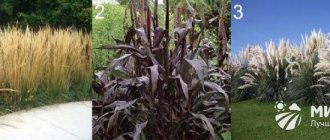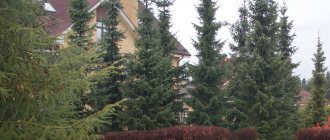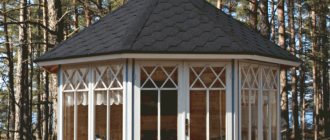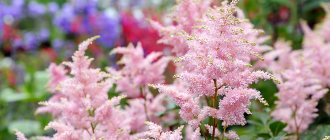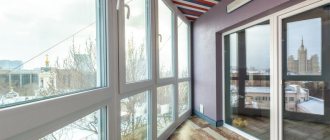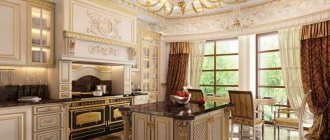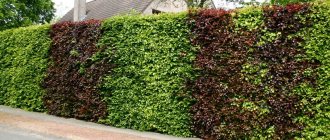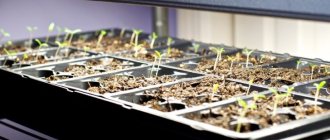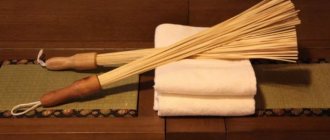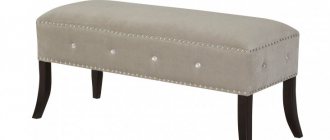What conifers should be like
The requirements that gardeners place on coniferous plants are completely fair.
- Firstly, spend the winter without shelter and at the same time not freeze in the cold. Many people consider the process of insulating plants troublesome, as it takes a lot of time and effort. Therefore, this criterion is important for summer residents.
- Secondly, the plant should not burn when exposed to direct sunlight.
- Thirdly, conifers should not dry out due to lack of moisture and, conversely, should not get wet on wet soil. And finally, they should grow well in any soil except waterlogged soil.
Creating a coniferous garden
To create a small coniferous garden, you need to select plants of different types and shades, differing in height and shape.
You can beautifully design an alpine slide on the site. Plant conifers between the stones, but make sure that the taller plants do not obscure the shorter ones.
Large stones can be beautifully “covered” as if by a blanket of creeping representatives of coniferous plants. Lay a garden path from the rock garden to your house or gazebo, thereby making the alpine slide the central composition in your garden decor.
And to make your garden always look neat and well-groomed, sprinkle open areas of the ground with geotextiles. With it, you won't be afraid of weeds.
Thuja
The most uncapricious representative of conifers. Instead of needles, it has flat branches. A wide range of colors and shapes of this plant allows gardeners to choose the ideal option for their acres.
Types and varieties of thuja (photo)
- folded;
- western;
- eastern
These are the three most popular types of thuja in the middle zone. They take root well in our climate, even in the northern regions. The plant can be trimmed, giving it fancy shapes and figures (cube, ball, pyramid, cone, animal figures, etc.). Therefore, it will become an excellent hedge or an integral part of an ensemble of ornamental plants. Can be planted on rocky hills or along paths.
In order for the plant to please with its appearance, it is better to plant it in a well-lit clearing. It will also grow in the shade, but its branches will not be so fluffy and beautiful. Thuja does not tolerate drought, waterlogged soil and highly acidic soil.
An ideal resident of even the most modest plot of land
Arborvitae are propagated, most often by sowing seeds in autumn. Its growth is quite fast and in the spring you will receive new young seedlings. It can also be propagated by cuttings, but this process is complicated - it is easier to propagate thuja with seeds.
Author of the article: Lastovskaya Lyudmila Viktorovna
Tags: conifers
- Related Posts
- Plants for vertical gardening
- Growing and caring for oleander at home (photo)
- Valerian will help against cabbage pests: tested by myself
« Previous entry
Juniper as a decorative component of the garden
Juniper is very unpretentious to grow. It is able to grow both in sunny areas and in the shade. However, the soil should not be very wet.
Juniper is a unique plant. Imagine, it purifies the air from various microbes, and also helps with headaches and nervous disorders, just inhale its healing aroma. Since ancient times, this plant has been used in the treatment of various diseases.Juniper belongs to the Cypress family and grows up to 20 meters. The shape can be either a shrub with spreading branches or grow like a tree with a crown in the form of a pyramid or cone.
The plant usually blooms in June and produces fruit in late summer. The berries have loose brown pulp, which is used in medicine.
Be sure to plant this amazing plant in your garden and enjoy its medicinal aroma and stunning views.
The place of pine in garden decor
These beauties from the forest will be a worthy addition to your garden. They grow well in open areas with plenty of sunlight, tolerate drought and sandy soil, but do not like constant waterlogging.
Pines produce phytoncides, which have a good effect on the human nervous system and lungs, and cleanse the environment of fungi and harmful bacteria.
Pines are very unpretentious and tolerate severe frosts and dry air well. For planting, seedlings no older than five years are best suited, but do not dig them up in the forest, but purchase them from a botanical garden or nursery. Here, the planting material is already prepared for planting, and the tree from the forest will most likely die within a year.
The seedlings are planted in a hole to a depth of 1 meter, after adding nitrogen fertilizers and a mixture of sand, clay and topsoil.
There is no need for pruning and watering, but young seedlings need to be fed with mineral fertilizers.
Mr. Summer resident informs
Having decided to plant coniferous trees and bushes at your dacha, you carefully select seedlings. To purchase, contact only specialized nurseries located nearby. This guarantees good survival of the plant and its adaptability to local climatic conditions. Purchasing planting material in wide-ranging shopping centers means risking the money spent. In most cases, plants are planted in low-quality substrate, overfed with fertilizers and hormones, and will have to be nursed for a long time, possibly without success. Moreover, you should not buy conifers from random sellers on the market. Along with the seedling, diseases and pests can be brought to the site.
In order for the garden composition to bring joy, we carefully study the rules of planting and growing each species or variety.
Charming spruces
Spruce trees grow well in the shade on moist, but not waterlogged, soil. They may die from drought.
Coniferous trees in the garden, as we have already seen, look very decent. This also applies to spruce. Typically, spruce trees take a long time to grow and grow very tall with spreading branches, so not every owner decides to plant a spruce on his property.
But if you still decide to take this step, then in the future you will get a beautiful tree that will delight you all year round.
On the eve of the New Year and Christmas, the tree can be decorated right on the street with large balls and garlands, creating a festive mood for yourself and passers-by.
European spruce
This spruce has a cone-shaped crown and reaches a height of 30 meters. The first ten years it grows slowly, and then up to 70 cm per year. Shade-loving and frost-resistant crop. Typically, these coniferous plants are used in the landscape design of city parks, squares and alleys.
Larch
The beautiful larch has chosen the subpolar lowlands of Alaska, the mountainous areas of the USA, and the European Alps. Widely distributed in Canada, Russia, Mongolia. In Ukraine you can see European larch; it grows in the western Carpathians. Frost-resistant, fast-growing, light-loving plant. Pollinates in April.
This is the only type of conifer that dresses up in gold in the fall and sheds its needles for the winter.
Larch cones resemble roses.
Prickly spruce
Designers use this green beauty with a pyramidal crown for landscaping. It got its name because of its sharp needles, several centimeters long, with a varied color palette: from blue and green to gray and even white.
But the beautiful color will only appear if the tree grows in the sun. Tolerates frosts and strong winds well, loves moist and loose soil.
Redwoods
The tallest and oldest tree on the planet, the sequoia, grows wild only in California (USA). The branches of the conical crown are located strictly horizontally, only occasionally bending slightly downwards, the average life expectancy is about one and a half thousand years.
The tree is not grown in open ground at our latitudes; it needs a lot of moisture in the ground and air. Indoor bonsai-style options are more popular. They require a lot of patience and care, but the exquisite beauty of the composition makes up for all the difficulties.
Dwarf coniferous crops for a summer cottage
If you own a small summer cottage, then there is simply no room for growing large coniferous trees. You will benefit from dwarf conifers for the garden. Moreover, crops that in adulthood, which is from 30 to 50 years, are no taller than a person can be considered dwarf.
It is low coniferous trees that are now very popular. Dendrologists from Holland identify several groups of dwarf conifers.
Classification of dwarf coniferous crops:
- Full-grown: every year they grow by 30 centimeters and after 10 years they reach 3 meters in height.
- Semi-dwarf and medium-sized: reach a height of no more than 30 centimeters.
- Dwarf: during the entire life cycle they grow up to 15 centimeters.
- Mini-dwarfs: the maximum height of crops is no more than 8 centimeters.
- Microdwarfs: reach a height of 3 centimeters.
This division of crops is very conditional, but it will help determine the choice of conifers for planting in small areas.
Let us highlight the advantages of dwarf varieties:
- they are exact copies of their larger originals, which allows you to become more familiar with the stages of growth and development;
- take up little space. Some species can even be grown at home on a windowsill.
- well suited for decorating rock gardens;
- They winter well under snow cover.
Let's talk about the disadvantages:
- susceptible to fungal attack. In this regard, mandatory treatment of plants is necessary;
- due to the fragile crown in spring, branches may break off during winds;
- do not reproduce well;
- fade in the sun;
- The life cycle of many species is short.
